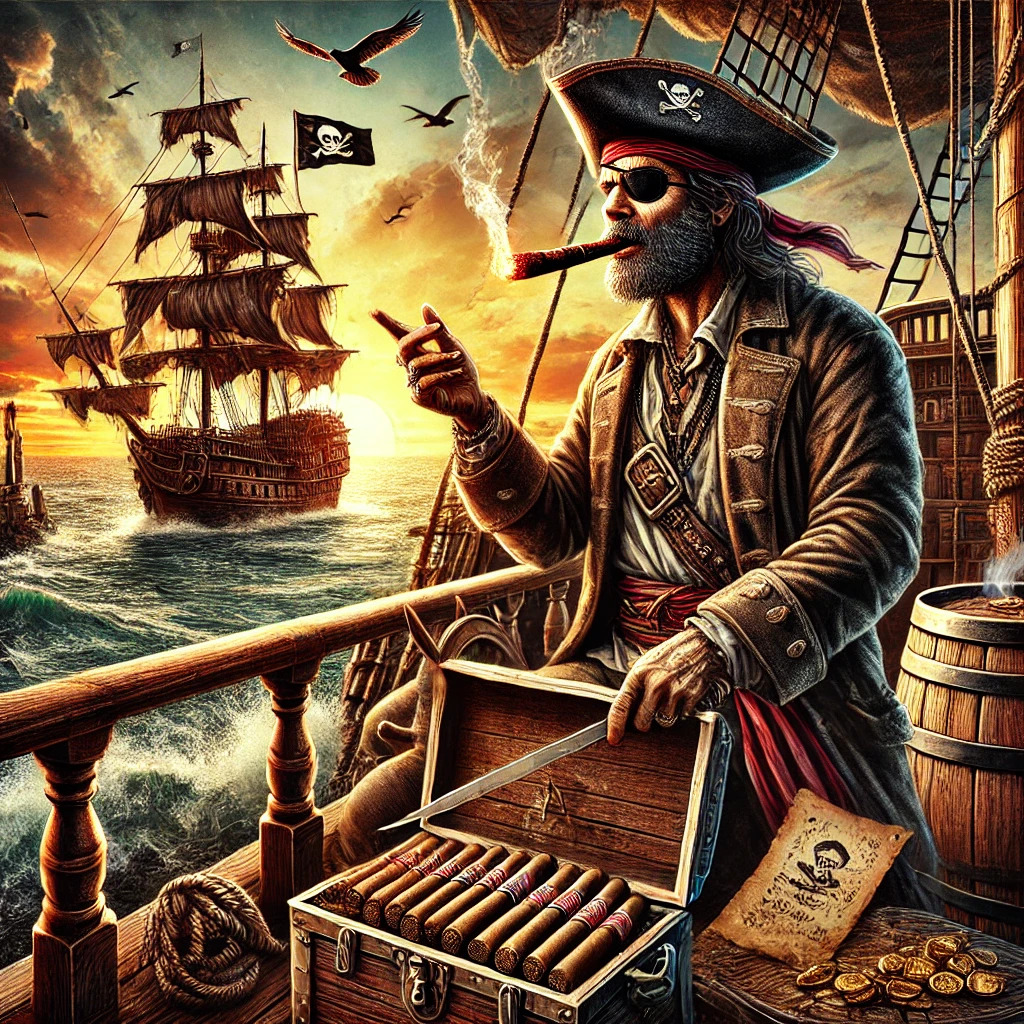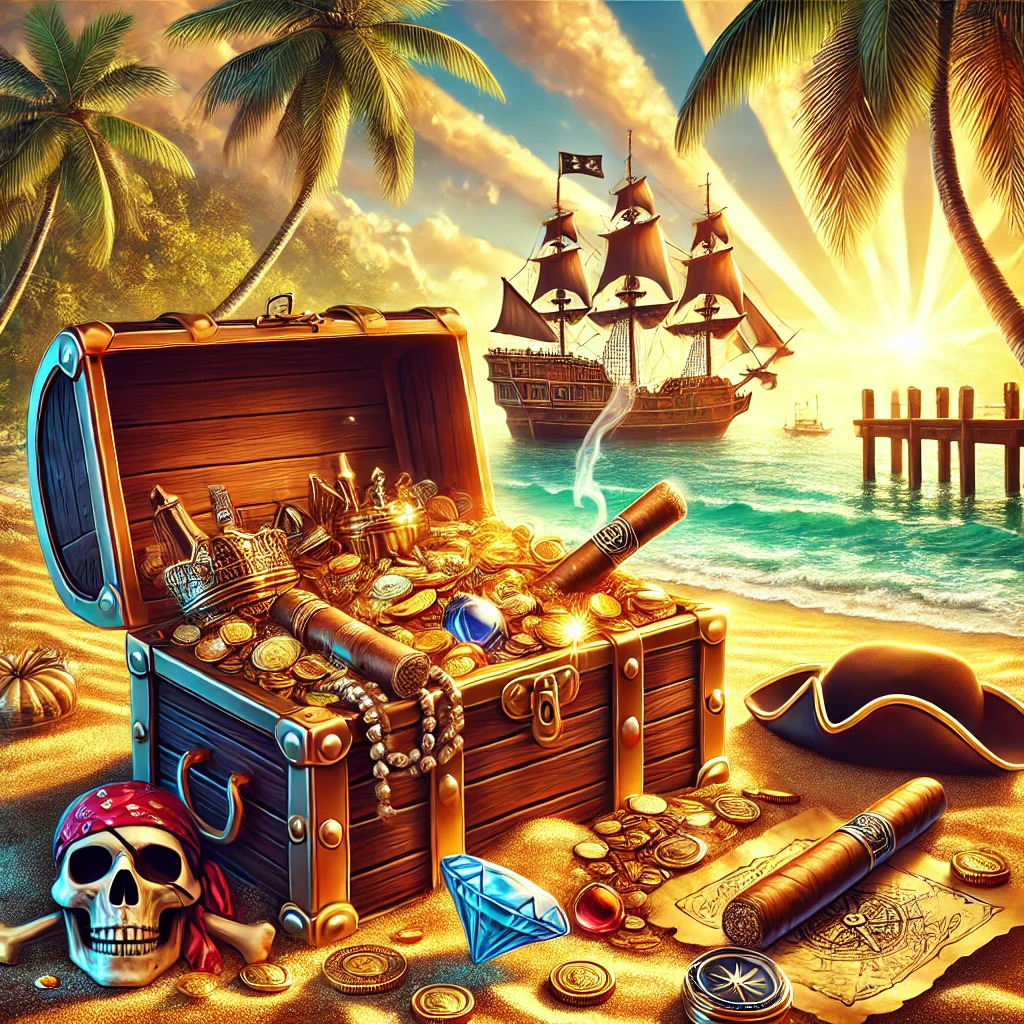Uncategorized
The Connection Between Pirates and Cigars: A Journey Through History, Culture, and Myth
The Connection Between Pirates and Cigars: A Journey Through History, Culture, and Myth
Introduction
Pirates have long captivated our imaginations. With their rugged appearance, adventurous lives, and rebellious nature, pirates symbolize freedom and danger. Cigars, on the other hand, evoke images of sophistication, leisure, and indulgence. At first glance, these two might seem worlds apart. Yet, dig deeper into history and culture, and a fascinating connection emerges. Pirates and cigars share a relationship that is rooted in the exploration of the New World, the Caribbean’s tumultuous history, and the legends that have been spun over centuries.
This blog post explores the intertwining paths of pirates and cigars, examining historical connections, cultural representations, and the myths that bind these two symbols together. By the end, you’ll understand why pirates and cigars are often mentioned in the same breath and how their stories have become intertwined in popular imagination.
The Historical Connection: Pirates, the New World, and Tobacco
Tobacco in the Age of Exploration
The story begins in the late 15th and early 16th centuries when European explorers, including Christopher Columbus, reached the Americas. Indigenous peoples in the Caribbean, Central America, and South America had been cultivating tobacco for centuries. They used it for ceremonial purposes, as medicine, and for recreation. European explorers quickly adopted the practice of smoking and brought tobacco back to Europe, where it became a sensation.
The Spanish established a monopoly on tobacco production and trade in the Caribbean, particularly in Cuba, which became a hub for high-quality tobacco. Other European powers, eager to capitalize on the lucrative tobacco market, engaged in smuggling and piracy to circumvent Spanish control. Enter the pirates.
Pirates and the Caribbean
The Golden Age of Piracy (1650–1730) coincided with the rise of the transatlantic tobacco trade. The Caribbean was a hotbed of activity, with Spanish galleons transporting gold, silver, sugar, and tobacco to Europe. Pirates, motivated by profit and the allure of treasure, frequently targeted these ships. Tobacco became one of the most prized commodities for pirates, as it was easily traded or consumed.
Pirates didn’t just steal tobacco; they were also involved in its distribution. Smuggling tobacco became a lucrative business, and pirates played a significant role in undermining Spain’s monopoly. Ports like Tortuga, Nassau, and Port Royal became centers of pirate activity and illegal trade, including tobacco smuggling.

Cigars Enter the Scene
While tobacco was initially consumed in pipes or as snuff, the cigar—a rolled bundle of tobacco leaves—gained popularity in the 18th century. With its ideal climate and fertile soil, Cuba became synonymous with high-quality cigars. Pirates who frequented the Caribbean likely encountered cigars during their exploits, further solidifying the connection between piracy and this indulgent tobacco product.
The Cultural Connection: Pirates and Cigars in Popular Imagination
Romanticizing the Pirate
The image of the pirate has evolved over centuries, shaped by literature, folklore, and Hollywood. Early depictions of pirates in literature, such as Robert Louis Stevenson’s Treasure Island, portrayed them as both ruthless and charming. This duality made them intriguing figures, straddling the line between villainy and heroism.
In popular culture, pirates are often shown enjoying the spoils of their adventures: gold, rum, and—you guessed it—cigars. The cigar became a symbol of their rebellious spirit and taste for the finer things in life. Movies like Pirates of the Caribbean and classic swashbuckling tales often include scenes of pirates lounging with cigars, further cementing the association.
The Cigar as a Symbol
Cigars have long been associated with power, wealth, and leisure. For pirates, who lived outside the bounds of conventional society, cigars represented both rebellion and indulgence. Smoking a cigar was an act of defiance against authority, a way to savor the rewards of their lawless lifestyle. This imagery has persisted, making cigars an integral part of the pirate mythos.
Pirates and Cigars: The Myth vs. Reality
Did Pirates Actually Smoke Cigars?
While the romantic image of pirates smoking cigars is prevalent, historical accuracy is more nuanced. During the Golden Age of Piracy, cigars as we know them were still evolving. Pirates likely consumed tobacco in various forms, including pipes and chewing tobacco. However, as cigars gained popularity in the 18th and 19th centuries, they became more accessible, and it’s plausible that pirates—especially those in the Caribbean—enjoyed them when they could.
The Role of Storytelling
The connection between pirates and cigars owes much to storytelling and the human tendency to romanticize the past. Writers, filmmakers, and artists have embellished the lives of pirates, adding elements like cigars to enhance their allure. While the reality of pirate life was often harsh and brutal, the myths paint a picture of freedom, adventure, and indulgence.
Modern Connections: Celebrating the Pirate Spirit with Cigars
Pirate-Themed Cigars and Branding
Today, the connection between pirates and cigars lives on in the world of premium cigar branding. Many cigar companies have embraced pirate imagery to evoke a sense of adventure and exclusivity. Brands like Black Sails, Buccaneer, and Treasure Chest use pirate-themed packaging, names, and marketing to appeal to cigar enthusiasts who are drawn to the romance of the high seas.
Pirate-Inspired Cigar Lounges
Cigar lounges with pirate themes have also become popular, offering patrons a chance to indulge in premium cigars while immersing themselves in a swashbuckling atmosphere. These lounges often feature nautical decor, pirate memorabilia, and even rum pairings, creating a unique experience that celebrates the connection between pirates and cigars.
Cigar Culture and the Pirate Ethos
Cigar culture and the pirate ethos share common values: freedom, rebellion, and the appreciation of life’s pleasures. Cigar aficionados often speak of the ritual of smoking as a way to disconnect from the hustle and bustle of modern life. Similarly, pirates sought to escape the constraints of society and live on their own terms. This shared philosophy makes cigars a fitting symbol of the pirate spirit.
The Pirate Legacy in the Cigar Industry
Cuba: The Heart of Both Worlds
Cuba’s history as a center of piracy and tobacco production creates a unique overlap. During the Golden Age of Piracy, Cuba was a strategic location for pirates, offering safe harbors and access to lucrative trade routes. At the same time, its tobacco fields were producing the raw material that would eventually become the world’s finest cigars. This dual legacy of piracy and cigars has left an indelible mark on Cuba’s cultural identity.
Treasure Hunts and Cigar Collecting
Cigar collecting is often likened to a treasure hunt, with enthusiasts seeking out rare and limited-edition cigars. This parallels the pirate’s quest for hidden treasure, adding another layer to the connection. Special releases with pirate-inspired themes, such as treasure chest-style humidors or limited-edition blends, further play into this narrative.
Conclusion
The connection between pirates and cigars is a fascinating blend of history, culture, and myth. From the smuggling of tobacco in the Caribbean to the romanticized image of pirates enjoying cigars on the high seas, this relationship is deeply rooted in both fact and fiction. While the realities of pirate life may have been far grittier than the stories suggest, the enduring image of the cigar-smoking pirate continues to captivate us.
Whether you’re a history buff, a cigar aficionado, or simply someone who loves a good story, the tale of pirates and cigars offers a rich tapestry of intrigue, adventure, and indulgence. So the next time you light up a cigar, take a moment to channel your inner pirate and savor the rebellious spirit that unites these two iconic symbols.

